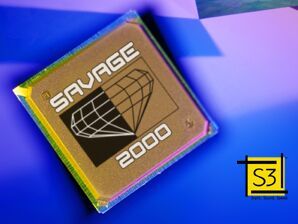S3 Savage 2000 Preview
Introduction

I was recently given the opportunity to take a first look at the Diamond Viper II (Savage 2000 based board) at the S3 campus in Santa Clara, Ca. S3 threw a small party to celebrate the introduction of the S2000 by inviting members of the press to play and test S2000 while there. Although not as optimal having the board in our own lab, I gladly took them up on the offer to get hands on experience with this newcomer. I planned to take some time to play with S2000, talk with some friendly PR folks/engineers and run some early benchmarks. I'll keep the very technical descriptions and performance breakdown for when we actually have a released board for a no holds barred review.
Savage 2000
So what's all the fuss about this Savage 2000? If you haven't read already, the Savage 2000 will be S3's latest offering that is .18 micron die size, integrated transform and lighting (T & L) supports S3TC, high quality video in/out/encoding/decoding performance (I was told that it would support DTV with an add-on card), high fill-rates (the demo was at 125 MHz core vs. the expected 166 MHz which means 250 Mpixels/s), high memory speeds (the demo was running at 155 MHz vs. the advertised 200 MHz), large frame buffer size (up to 64 MB with a base size of 32 MB on the retail board), "quad texturing" in a single pass, a very competitive price (S3 told me it would release at a cost of $199 contrary what anyone else has assumed on the Nov. 12th release date) and a true OGL ICD upon shipping. It sounds like a tremendous amount of work had to be done to go from the Savage III to something of this caliber and my expectations were very high while investigating what the card could really do.
Stay on the Cutting Edge
Join the experts who read Tom's Hardware for the inside track on enthusiast PC tech news — and have for over 25 years. We'll send breaking news and in-depth reviews of CPUs, GPUs, AI, maker hardware and more straight to your inbox.
Most Popular

